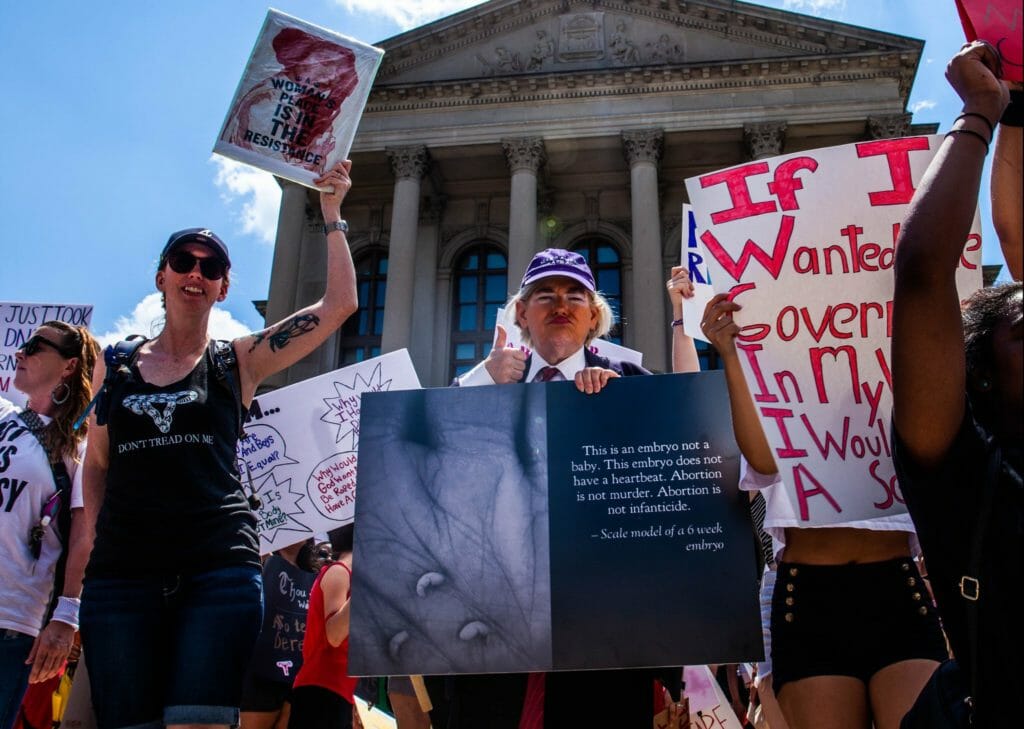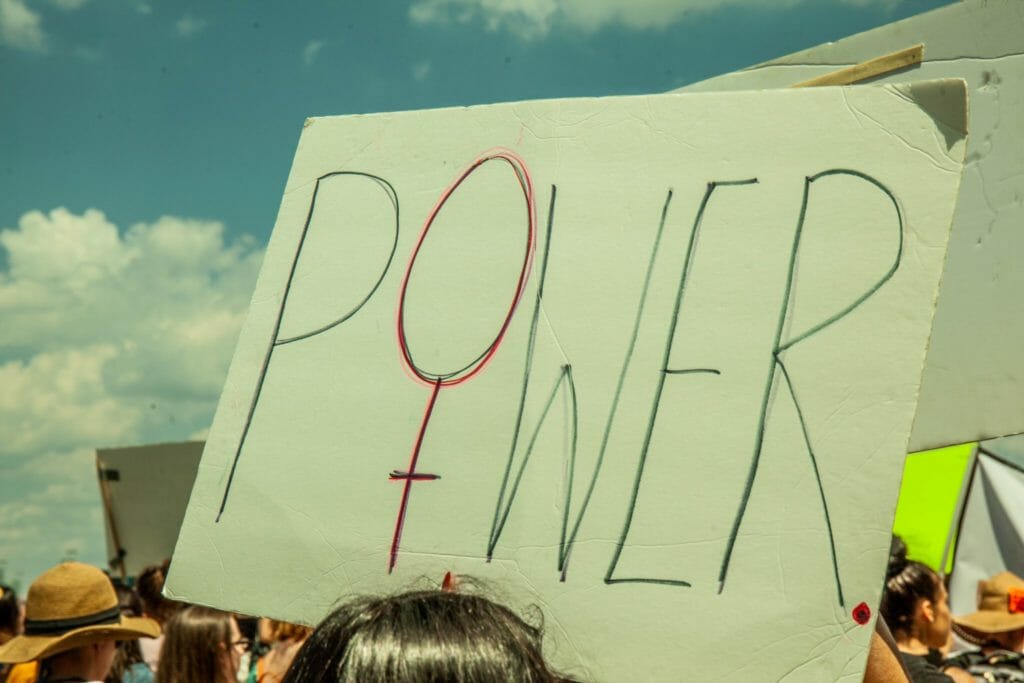Originally published in print on Thurs., Dec. 19, 2019.

Since its founding in 2003, U.S. Immigration and Customs Enforcement has morphed from a small bureaucratic agency designed to prevent terrorism into a massive operation overseeing the widespread detention and deportation of immigrants. Under President Donald Trump, the agency has become a symbol of the divide over immigration in America. The ICE union formally endorsed Trump during his 2016 campaign, while the explosion in deportations during Trump’s presidency and the inhumane conditions at detention centers have led to many progressives calling for the abolition of ICE entirely.
Although ICE has largely become a political talking point during Trump’s presidency, the question of why the agency exists in the first place has been a theme throughout its history, even within the Department of Homeland Security itself. Back in 2005, the DHS Inspector General’s office published a report that suggested merging ICE with its sister organization U.S. Customs and Border Patrol into a single border security agency, stating: “We could not find any documentation that fully explains the rationale and purpose behind ICE’s composition.” According to an unnamed senior official in the report, “ICE was established not with a focus on supporting a particular mission, but on building an institutional foundation large enough to justify a new organization.”
Keeping this in mind, it is easy to see why the agency has expanded so rapidly over the past 15 years and how it has become a weapon against immigrant communities under the Trump administration.
The Bush Years: Homeland Security
In response to the national panic following the Sept. 11 attacks, President George W. Bush created the Office of Homeland Security in October 2001. According to an official press release, the goal of the organization was to “develop and coordinate the implementation of a comprehensive national strategy to secure the United States from terrorist threats or attacks.” The following year, Congress passed the Homeland Security Act, which consolidated and restructured 22 existing federal agencies under the new Department of Homeland Security. By combining aspects of the old U.S. Customs Service and the U.S. Immigration and Naturalization Service, ICE was formed in 2003 specifically as the investigative unit of the DHS. According to a 2004 report by the U.S. Department of Justice, “the primary mission of ICE is to prevent acts of terrorism by targeting the people, money, and materials that support terrorist and criminal activities.”
In other words, the federal government no longer saw immigration policy as an administrative concern—immigration was now a national security issue.
One of the first policies implemented by ICE was Operation Endgame, a 2003 deportation enforcement plan with the goal of “removing all removable aliens” in the U.S. by 2012.
While the creation of the DHS placed a new emphasis on immigration enforcement, the system of mass detention and deportation actually had its roots in a 1996 law signed by President Bill Clinton called the Illegal Immigration Reform and Immigrant Responsibility Act. The bill essentially criminalized undocumented immigration, forced many immigrants into detention while awaiting a trial before a judge, and allowed legal immigrants who had committed crimes in the U.S. to be stripped of their green card status and deported. After the DHS was formed, the new department used these guidelines to start detaining, prosecuting, and deporting undocumented immigrants en masse from the U.S.
One of the first policies implemented by ICE was Operation Endgame, a 2003 deportation enforcement plan with the goal of “removing all removable aliens” in the U.S. by 2012. By 2006, the DHS also ended the so-called “catch and release” strategy of allowing migrants to live freely in the community while awaiting their immigration hearing and started an initiative called Operation Streamline to criminally prosecute people caught crossing the border without authorization.
It\’s important to consider the legal terminology for deportation when looking at these policies: A “removal” is when someone is caught and deported from the country via a court order, while a “return” is when someone from Mexico or Canada is simply turned away at the border without a hearing in front of an immigration judge. People who entered the country legally but have overstayed their visa are subject to removal but do not face criminal charges, while people caught crossing the border illegally could face a criminal prosecution before removal. People who had been in the U.S. for less than 14 days and were apprehended within 100 miles of the border could also be subject to “expedited removal,” a swift administrative deportation that simply returns them to their home country without appearing before an immigration judge. All of these can be considered deportations, but the legal repercussions can vary greatly depending on the person’s exact immigration status.
Under the early Bush administration, Mexican citizens caught crossing the border illegally were often simply returned or expedited to Mexico without being considered legally detained. Meanwhile, non-Mexican migrants who crossed illegally and were apprehended within 100 miles of the border were usually detained, sent through civil immigration proceedings, and eventually deported. First-time offenders of both groups were usually not criminally charged, while repeat offenders of either group could be prosecuted under Operation Streamline and faced steep fines or federal prison sentences.
Bush also proposed an immigration reform plan that would have established a guest worker program and provided a clearer path to citizenship for the millions of undocumented immigrants living in the U.S. at the time. Bills containing elements of Bush’s plans were introduced to Congress in 2006 and 2007, but faced criticism from both sides and ultimately, neither reform bill was passed. Conservatives were skeptical of the path to citizenship, while liberals criticized the guest worker program by saying it would create a group of low-paid workers with no social benefits.
The Obama Years: Immigration Crisis
When President Barack Obama was elected in 2008, he promised to reform immigration policy by making the path to citizenship easier for undocumented immigrants and by focusing the deportation system on people who were considered genuine threats to national security. However, under Obama’s administration, ICE grew much more powerful and set in motion the vast deportation engine that Trump inherited and weaponized against the nation’s immigrants.
In 2009, Congress passed their yearly budget for the DHS with a mandate that detention centers “maintain a level of no less than 33,400 detention beds.” By including this arbitrary number, lawmakers essentially gave ICE a quota of immigrants to catch and bumped the agency’s yearly budget up to $6 billion—almost double its original $3.3 billion budget in the early years of the Bush administration.
Under Obama’s administration, ICE grew much more powerful and set in motion the vast deportation engine that Trump inherited and weaponized against the nation’s immigrants.
Many of these detention centers are private prisons. According to a January 2019 Reuters article, ICE is the top client for the two largest U.S. private prison corporations and spends nearly $1 billion a year on its private prison contracts alone. Rampant human rights abuses have been reported at many of these facilities, with multiple accounts of unsanitary living conditions, detainees being physically and sexually assaulted, and inhumane work programs that pay workers pennies for hours of labor.
As part of Obama’s immigration reform plan, ICE was ordered to exercise “prosecutorial discretion” and only target undocumented immigrants who had committed serious crimes for detention or deportation. Obama described the shift as a focus on prosecuting “felons, not families.” Most undocumented immigrants who were apprehended were treated as civil cases and were not subject to criminal prosecution unless they committed a serious crime within the U.S.
Obama also created the Deferred Action for Childhood Arrivals program (DACA) by executive order in 2012, which allowed certain people who arrived in the U.S. as children to be granted a renewable two-year grace period from deportation and become eligible for a work permit. ICE officials criticized these changes as being inconsistent and creating confusion about who to target. The year 2014 saw a massive surge in unaccompanied minors seeking asylum from gang violence in Central America, which conservatives blamed on Obama’s apparent leniency towards deporting children. To deal with the surge, Obama implemented the Central American Minors Program (CAM), which allowed lawfully present parents in the U.S. to request refugee or parole status for their children coming from El Salvador, Guatemala, or Honduras.
Despite these policy changes, ICE continued to ramp up deportations and federal spending under Obama. According to the Migration Policy Institute, “By 2013, the United States was spending more money on immigration enforcement than all other federal criminal law enforcement agencies combined.” Between 2009 and 2016, the DHS deported (removed or returned) nearly 2.9 million people, a record number of deportations for any administration.
The Trump Years: Zero Tolerance
President Trump’s virulent and often racist anti-immigrant rhetoric became the defining feature of his presidential campaign. He pledged to his supporters that he would “build a wall” on the Mexican border and force Mexico to pay for it. In his campaign announcement speech, he infamously remarked, When Mexico sends its people, they\’re not sending their best… They\’re bringing drugs. They\’re bringing crime. They\’re rapists. And some, I assume, are good people. This attitude won over many hardline conservatives, and the ICE and CBP unions officially endorsed Trump during his campaign. Since his election in 2016, Trump has essentially weaponized the detention and deportation pipeline created by Clinton, Bush, and Obama in order to enforce his xenophobic nationalist platform.
In sharp contrast to Obama’s discretionary policy of focusing on immigrants with serious criminal backgrounds, Trump greatly expanded the category of people prioritized for removal.
Within a week of his inauguration in January 2017, Trump issued an executive order instructing the DHS to deport “all removable aliens.” In sharp contrast to Obama’s discretionary policy of focusing on immigrants with serious criminal backgrounds, Trump greatly expanded the category of people prioritized for removal. ICE began conducting sweeping immigration enforcement raids, in some cases removing people who had been living peacefully in the U.S. for years with no criminal convictions. In the months that followed, Trump announced that he would phase out DACA, ended the CAM program, cancelled temporary protective status for thousands of refugees, and issued a temporary travel ban against citizens from a number of Arab countries to the U.S. While the travel ban and DACA cancellation have faced legal challenges in the courts, many of these policies are still in place and have drastically overturned the precedents set for people seeking asylum in the U.S.
In April 2018, Attorney General Jeff Sessions directed prosecutors to adopt a “zero-tolerance policy” for improper entry into the U.S. and said that this zero-tolerance policy would “supersede any existing policies.” Rather than simply being deported, first-time offenders could now be criminally convicted for illegal border-crossing, which has led to families being separated from their children as parents await trial or serve time in federal prison.
Finally, in July 2019, Trump announced that the jurisdiction for the “expedited removal” process would be expanded from within 100 miles of the border to nationwide. ICE agents could now arrest, detain, and fast-track deportation for undocumented people who had been living anywhere in the U.S. for under two years. More sweeping ICE raids followed, and in some cases, agents were reported questioning and detaining people who turned out to be legal U.S. citizens.
When comparing Trump’s crackdown on immigration to the policies of previous administrations, it is immediately clear that these changes are being used to specifically target people of color for political purposes. Trump’s rhetoric describing immigrants as “animals” from “shithole countries” has been taken as a rallying cry by white nationalists and neo-Nazis, and there have been multiple cases of violent hate crimes against immigrants since Trump’s election, including the August 2019 mass shooting in El Paso, Texas, where the shooter specifically targeted the local Latino community.
In September 2018, Atlanta Mayor Keisha Lance Bottoms announced that Atlanta would end its relationship with ICE and remove all detainees from the city jail.
Since Trump’s policy changes have gone into effect, many local police jurisdictions have actually stopped cooperating with ICE because of the negative connotations associated with the agency. For example, in September 2018, Atlanta Mayor Keisha Lance Bottoms announced that Atlanta would end its relationship with ICE and remove all detainees from the city jail. ICE responded by moving these detainees to a privately-owned detention center outside of the city—still problematic, just somewhere else.
In a July 2018 tweet, former DHS official Moira Whelan summed up the problem with ICE being used for political purposes: “I think national security experts miss the point that the progressive call to abolish ICE is not just a knee-jerk anger at cops. It is also a recognition that they aren\’t doing what we built them to do… Instead, they are using a legislative authority to accomplish a political goal, not tied in any empirical way to making the country safer.”

Trump’s use of executive power to terrorize immigrant communities is a blatant misuse of authority to further his white nationalist agenda. America is, and has always been, a nation of immigrants—our diversity is one of the things that actually does make America great. By shunning immigrants from Latin America and the Middle East while married to a European immigrant himself, Trump exposes the racial overtones of his policies and emboldens his supporters to further acts of political and bureaucratic violence.




